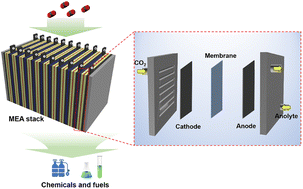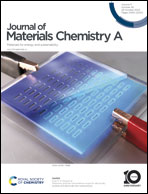Advances and challenges in membrane electrode assembly electrolyzers for CO2 reduction
Abstract
Membrane Electrode Assembly (MEA) electrolyzers hold great promise for industrial-scale CO2 reduction (CO2RR) applications, primarily due to their low systemic resistance compared to other electrolyzers. However, there are existing challenges that hinder the widespread application of MEA in CO2RR. These challenges include the need for stable MEA systems, improved CO2RR selectivity, selective production of highly valuable multi-carbon products, and enhanced CO2 conversion efficiency. In this comprehensive review, we provide a summary of recent progress in MEA for CO2RR and discuss its development in three main sections. Firstly, we emphasize the fundamentals of MEA construction and the corresponding evaluation factors for CO2RR. Secondly, we delve into the detailed CO2RR performance and advantages of MEA utilizing different technical routes. Finally, we address the main problems encountered and promising solutions proposed for MEA applied in CO2RR. Furthermore, we highlight the remaining challenges and opportunities that lie ahead for the broader implementation of MEA in larger-scale CO2RR applications. By addressing these challenges, MEA electrolyzers can become a pivotal technology in advancing efficient CO2 reduction and the production of valuable chemical products.

- This article is part of the themed collection: Journal of Materials Chemistry A Recent Review Articles


 Please wait while we load your content...
Please wait while we load your content...